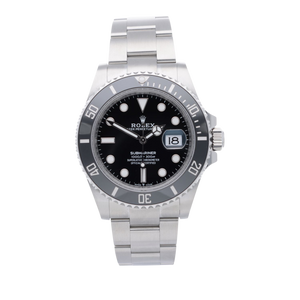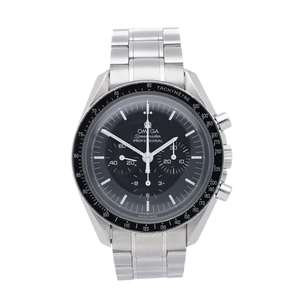Summer, sun, beach (or your own garden) and sea: How to properly protect your watches against external influences during the summer
For centuries, watchmakers have been honing the durability of timepiece components. Over time, perfected techniques and improved materials have indeed made it possible to make wristwatches increasingly durable. However, some external influences can still take their toll on these treasures. Summer, in particular, which is already knocking on the door, holds a few dangers for highly prized luxury watches. Below, we'll explain how to skillfully protect your timepieces during the summer months and which models are particularly robust.

Sun, salt, sand and sunscreen
The conditions on a beach vacation or on your balcony can be a nightmare for your beloved luxury watch. To prevent this from happening and to ensure you can enjoy your fine pieces for a long time, we have some valuable information and tips. The watch should always be protected as well as possible from sand, dust, sweat, water, sunscreen, and direct sunlight to avoid negatively affecting its accuracy and lifespan. However, completely shielding it from external influences is almost impossible unless you simply leave it in the closet – which would be a shame, of course. Watch fans who want to wear their treasures in the summer can do a lot to protect them. Above all, timepieces should not be exposed to large temperature fluctuations. Excessive heat and prolonged exposure to sunlight could damage the watch. Long sunbathing is therefore recommended. You should generally take off your watch when going to the sauna, as otherwise lubricating oils can liquefy and damage the movement.
Be careful with water
It is important to know that the water resistance of a watch can be affected by temperature fluctuations and the influence of sweat and creams. A timepiece worn while swimming or diving should be treated with particular care and always cleaned of all residue after removal. Swimming and immersion in water can temporarily exert increased pressure on the sealing elements. For this reason, you should not jump into the water immediately after a long sunbath, as the impact pressure and the negative pressure combined can more easily cause damage. After contact with chlorinated water or salty seawater, every watch should be cleaned with clean tap water, as otherwise the seals and case can suffer. However, the watch should have a water resistance of at least 5 ATM. Water resistance is not a constant property, as the function of the sealing elements can deteriorate. Ideally, the water resistance of the timepiece should be checked once a year in a specialist shop, especially before going on vacation and the associated stresses on the watch. "Water-resistant" watches can only withstand hand hygiene and splashes of water. They are not designed to withstand water pressure or fluctuating temperatures. If condensation accumulates inside the watch, it must be taken to a specialist shop immediately to prevent the moisture from seriously damaging the watch.

The right summer watch
The easiest way to choose a particularly robust watch during the summer is to opt for a particularly robust one. Its case, glass, and seals should meet the highest standards. Water, sand, and dust can be effectively kept out with a single-shell, monobloc, or monocoque case. In these timepieces, the movement is inserted from above, and the watch is sealed by the glass. Watches with such cases are rare, however, as glass backs with a clear view of the interior are popular. Acrylic glasses, however, should be avoided at all costs. While scratches can be easily polished out of these, they are hardly resistant to anything. The same applies to crystal and mineral glass. Therefore, it should definitely be extra-hard sapphire glass, which is almost as hard as diamond. The case should withstand scratches and impacts. Brass should be avoided if possible, as the chrome, silver, or gold plating will eventually peel off. Gold and platinum scratch easily, while stainless steel is particularly hard and less susceptible to scratches. Timepieces with ceramic cases are also a smart choice in hot weather, as ceramic is extremely hard and scratch-resistant, allowing you to go on vacation without a completely scratched watch. A screwed-on case back is also essential; pressed-on backs should be avoided. This is the only way to keep sand and other contaminants out. The sealing ring between the case back and the case should be an O-ring, as it sits in a specially milled channel, the so-called "groove," which is designed so that the ring deforms slightly oval-shaped when closed. This ensures that the ring fits evenly and cannot slip. Durable luxury sports watches now all feature such O-ring seals, which reliably protect the movement. Furthermore, the pushers and crowns should be well sealed. Rolex, for example, offers a so-called Twinlock, which has an additional seal on the front of the tube inside the crown. Some watches even have a third seal located between the crown and the outer wall of the case. The whole thing is called a Triplock. Rolex has already filed a patent for this technology. Reliable timepieces made of durable materials and featuring helpful technologies effectively repel sun, water, sand, sweat, and sunscreen. With these watches, you can withstand the elements.
The right bracelet
Leather straps are classic and popular. But they are particularly sensitive. Unfortunately, they do not tolerate water or moisture, cosmetics, and direct sunlight. This natural material is prone to discoloration, staining, and porosity. Therefore, leather straps should not even be worn for hand washing, sports, or showering. Patent leather or rough leather such as suede or nubuck are even worse. Leather is therefore not recommended for hot weather, especially as it tends to cause sweating. Metal straps are a better choice, as they are more durable. Soiling from sunscreen and the like can be easily removed with a fine microfiber cloth. Afterwards, the individual strap elements and the spaces between them can be cleaned using a cotton swab or a soft brush dipped in mild soapy water. Rinse off any soap residue with clean water and place the watch on an absorbent surface to dry. The dry watch can then be polished with a clean microfiber cloth. For watch enthusiasts who do not want to use a watch with a metal strap, rubber is recommended. The natural material is far less sensitive than leather. However, prolonged exposure to direct sunlight should also be avoided, as this can cause the strap to fade. Rubber straps should also be cleaned regularly with mild soapy water and then rinsed with clean water.

The basics of cleaning in summer
Every watch should be cleaned after wearing it in the summer with clean water and a soft cloth or a dry toothbrush to remove traces of sea salt, sand, creams, sweat, etc. No dirt should accumulate between the lugs. Timepieces with a water resistance of over three bar can also be rinsed under running water. However, leather straps should be removed beforehand, as they should not come into contact with water. Cleaning agents can also change the color of the leather or leave unsightly marks. Metal cases and straps can be polished with a cotton cloth. Small scratches can be treated with polishing paste. If the glass is damaged on the inside, however, you should consult a watchmaker. Only a watchmaker should open a timepiece. Ideally, wristwatches should also be professionally cleaned once a year using ultrasonic cleaning.












